Grade II*-listed landmark’s refresh includes a library, gym and yoga room in its former utility tower
Architect Studio Egret West has unveiled the completed refurbishment of Erno Goldfinger’s Balfron Tower, one of the most celebrated brutalist buildings in the UK.
The 27-storey tower in Poplar, east London, is seen as a defining example of “streets in the sky” housing in post-war Britain.
Built between 1965 and 1967 for the Greater London Council, it was grade II-listed in 1996 before being upgrade to a grade II* rating in 2015.
Tower Hamlets transferred ownership of the tower to housing association Poplar HARCA in 2007. The development has been led by a joint venture featuring Poplar HARCA, housebuilder Telford Homes and mixed-use specialist developer Londonnewcastle.
Studio Egret West has worked with the borough of Tower Hamlets, Historic England and interior designer Ab Rogers Design to bring the tower up to modern standards for the JV.
The archtiectural practice said the project has sought to strike a balance between conserving the heritage of the building and adapting it to the expectations of 21st century occupiers.
Studio Egret West partner Christope Egret said: “Our approach, from the outset, was to ask ourselves ‘How would Erno Goldfinger approach the upgrade to the tower – both in terms of contemporary uses and current regulations?”
The building’s former utility tower has been converted into communal spaces including a gym, a library, a music room, a yoga space and a cinema, while a communal garden has been created on the roof.
A public square has been created at the base of the building incorporating the existing community centre and a new play space replacing a former playground which had been considered unsafe and anti-social.
Homes are split into six types, designed jointly between Studio Egret West and Ab Rogers Design in a 50/50 collaboration aiming to provide more design variety.
Most flats have been converted into open plan layouts, while six have been maintained as “heritage flats” in keeping with Goldfinger’s original designs.
Door thresholds have been set back and clustered into groups of three on the building’s “streets”, the open-air corridors linking the flats, while windows onto the corridors have been frosted and reeded for privacy.
The exposed concrete structure has been repaired and cleaned with internal treatments including a breathable waterproof cementitious coating. Technical issues such as cold bridging, insulation, fire and acoustic performance have all been reviewed and addressed.
The original white timber LCC standard windows have been replaced with bronze coloured, narrow profiled frames intended to let the concrete stand out and maximise views.
The new frames have a high acoustic specification, thermal reflection to avoid overheating and integrated acoustic attenuation panels, to provide night-time cooling for each bedroom.
The building is now BREEAM ‘Excellent’ and Part L compliant.
The scheme adds to Studio Egret West’s portfolio of historic building refurbishments, which includes the brutalist Park Hill in Sheffield. The practice is also set to work on refreshing buildings in Digbeth, Birmingham, and Hayes Park and Faraday Works in London.




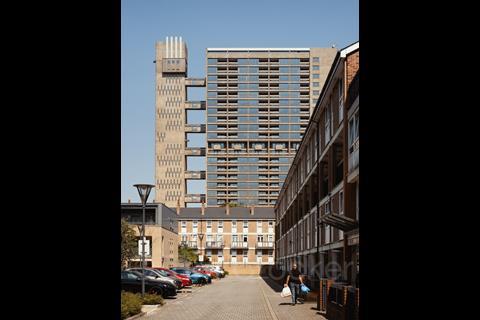
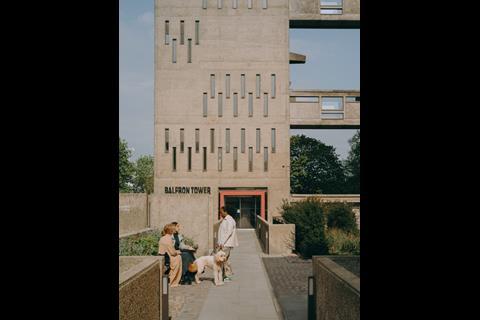
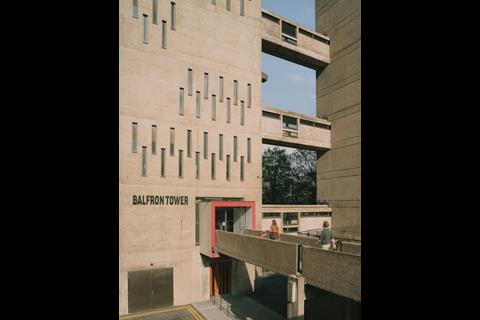
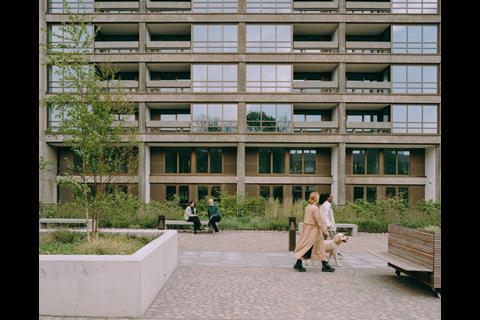
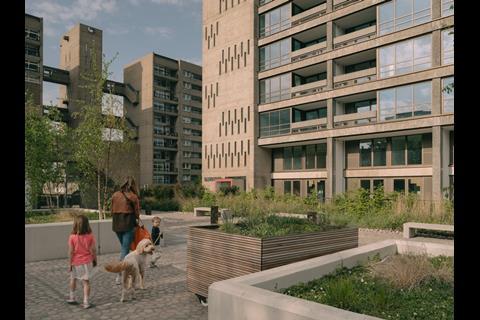
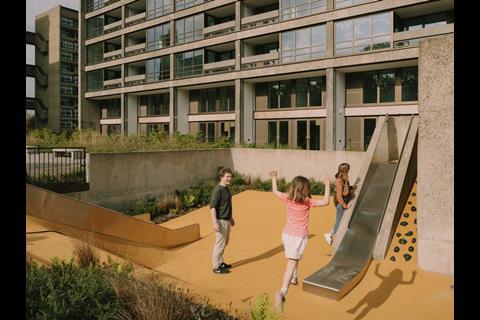
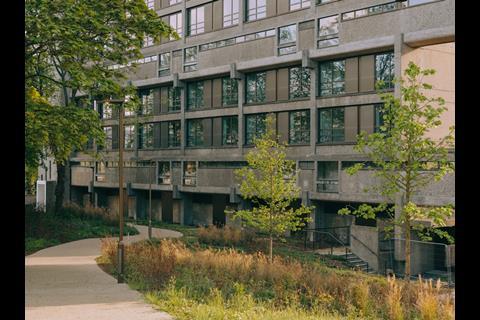


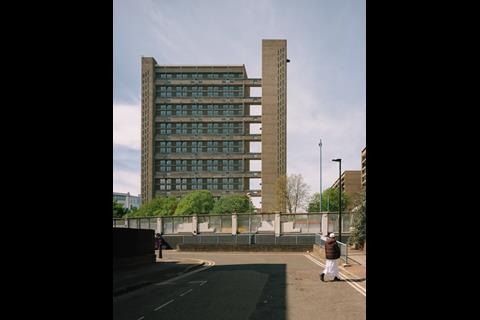
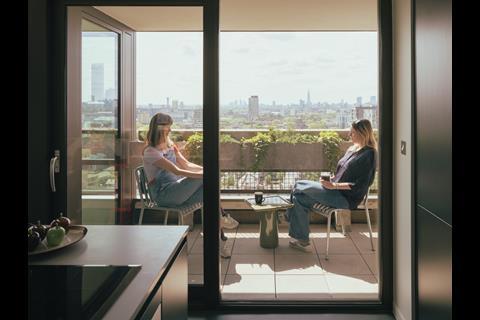
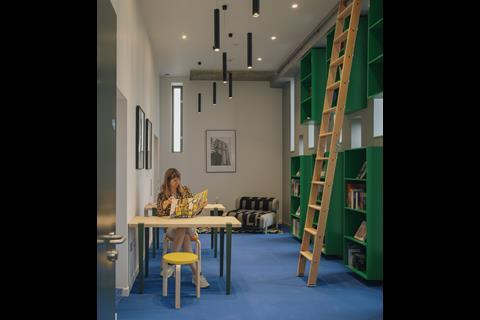
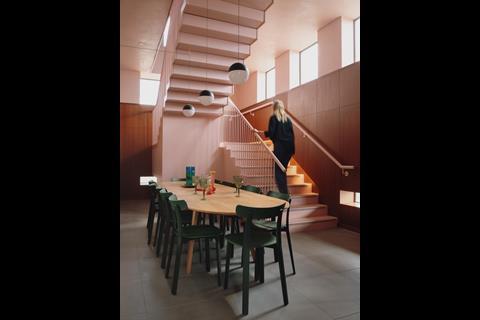
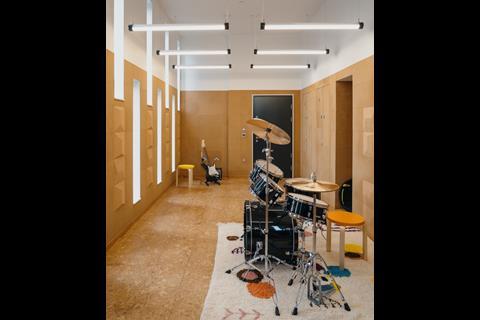
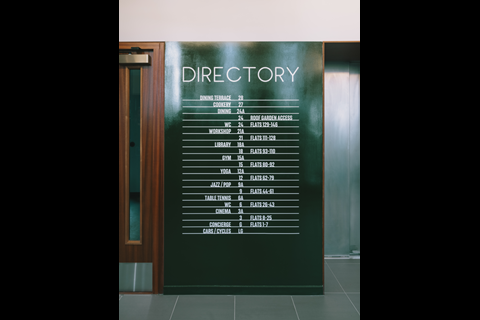

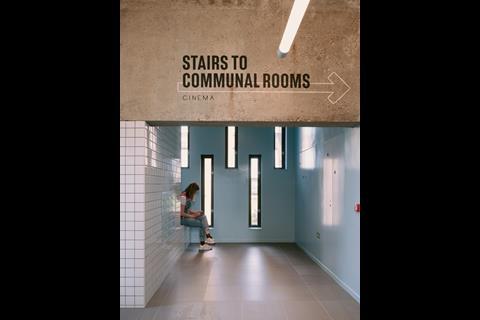
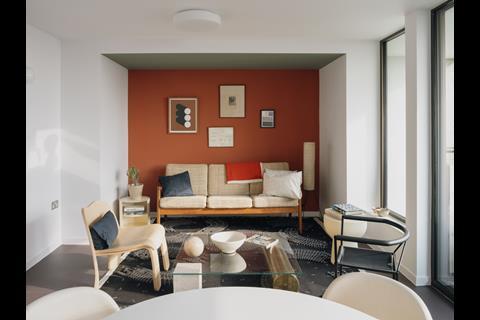








No comments yet